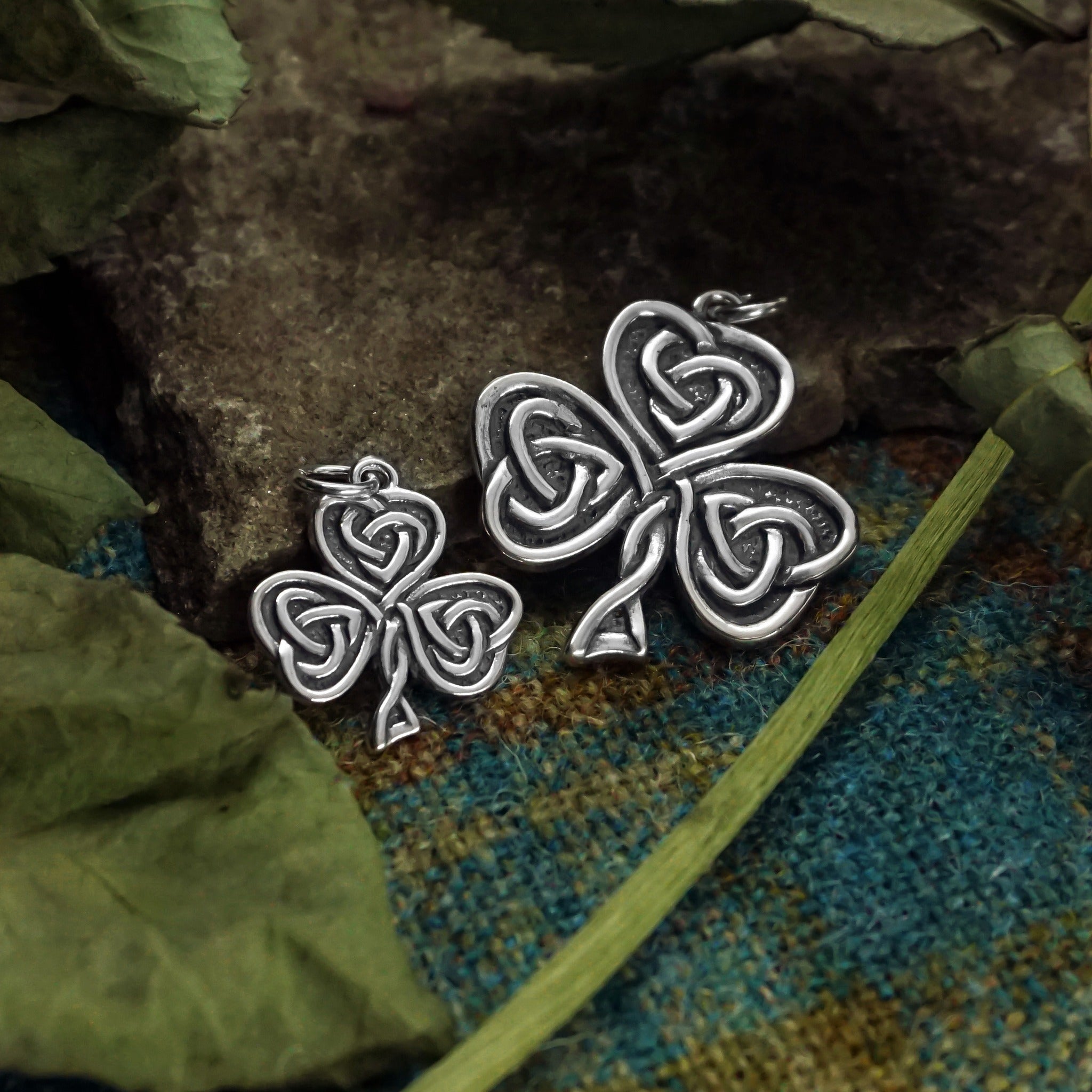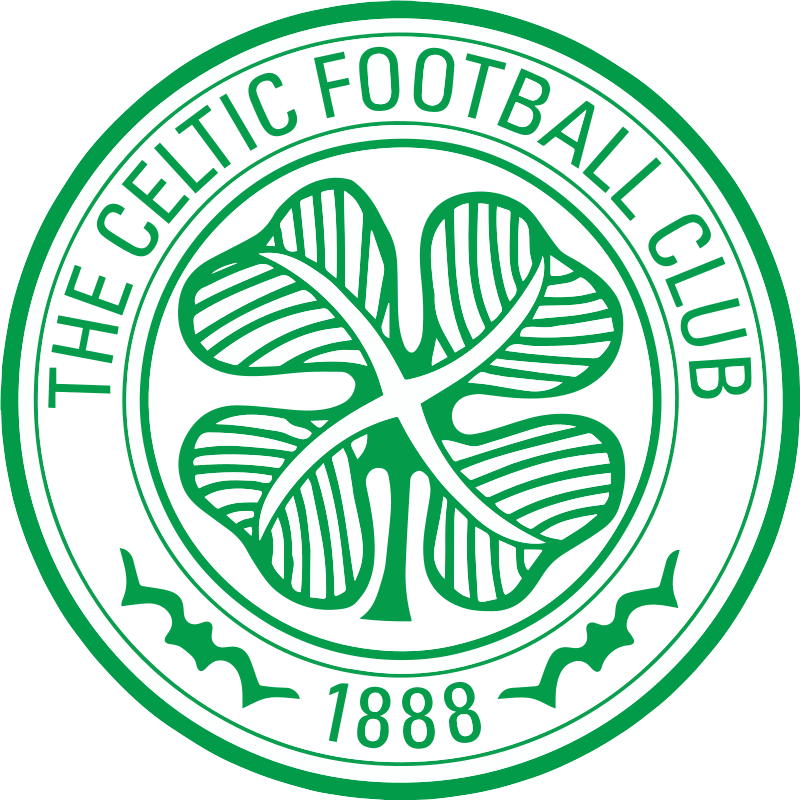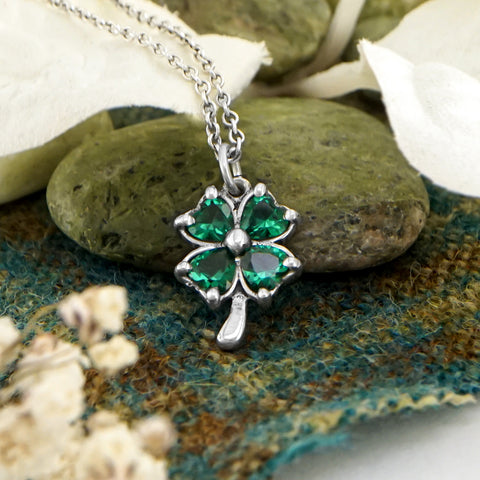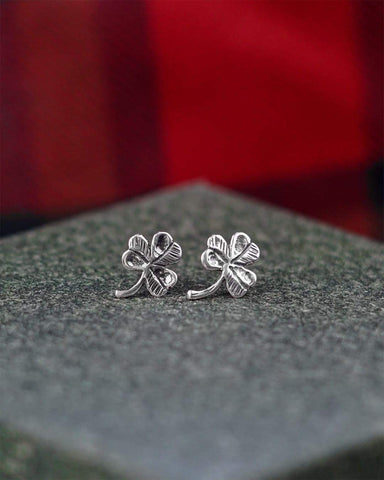- Jewelry
- Crosses
- Rings
- Mens
- Claddagh
- Wedding
- Personalized Jewelry
- John Urban Jewelry
- Sale
- Gift Certificates
- About Us
March 12, 2024

The simplest answer to what is a shamrock is is actually not that simple. At its essence it is a three-leaved groundcover plant found in Ireland and across the globe. Are true shamrocks wood sorrel or common clover? The jury has been out since before St. Patrick first held up the shamrock as an example of the Holy Trinity.

St. Patrick's Half Penny Coin, Circa 1641
Well, yes. St. Patrick's shamrock had three leaves to represent the holy trinity; the Father, the Son and the Holy Ghost. However, the luckiest clover are the four-leaf variety and are those not also shamrocks? The word shamrock comes from the Irish seamair óg, which is Irish for "young clover," and couldn't a four-leaved clover fit that description?
The Four-Leaf clover is often said to be lucky and of course there is also the luck of the Irish. So perhaps an Irish four-leaf clover is doubly lucky. The four-leaved variety can be seen on the logos and jerseys for the Celtics football team based in Glasgow. Although, the Boston Celtics prefer the three-leaf shamrock.

Perhaps it is one of those situations where all shamrocks are clover, but not all clover are shamrocks. There are a plethora of clover varieties found across the globe. From Trifolium dubium or lesser clover to Oxalis acetosella, also called wood sorrel, the plants included in the shamrock family have shifted and changed over time. Shamrock used to denote specifically a variety found in Ireland. However with the spread of Irish diaspora across the world we have found shamrocks wherever we have gone.
In the first references about shamrocks in English writing in Edmund Campion's Boke of the Histories of Irelande, Shamrock was said to be eaten by the "wild Irish" people along with other roots and herbs. This was then long repeated as a slight to the Irish people, often implying that eating shamrock was the act of starving and barbaric people. Although, many folks will say the taste of wood sorrel is quite lovely and the English also delight in their watercress and are these things not similar?
This negative association with the word shamrock, although the herb eaten may not have been actually shamrock, may be why some people of Irish origin don't embrace the pageantry of shamrockery today. However, like many words used to negatively stereotype a nation of peoples, Shamrocks have now been embraced as a symbol of the people and isle of Ireland.
A Four-leaf clover in Sterling Silver with Green Heart CZ
The easiest answer here is that the patron saint of Ireland, St. Patrick, himself held it up as a natural example of the holy trinity. By the 1800's it came to represent more than St. Patrick as Irish Volunteers took up the symbol as a part of their emblems. It is also often referenced in poetry when expounding on the beauty, strength and resiliency of Ireland. Setting aside the negative references of the English, the beautiful poetry and folk songs of the Irish people is a far better example of the Irish connection to shamrock.
"Then since the colour we must wear is England's cruel red
Sure Ireland's sons will ne'er forget the blood that they have shed
You may take the shamrock from your hat and cast it on the sod
But 'twill take root and flourish there though underfoot 'tis trod"Excerpt from The Wearing of the Green
In modern times the shamrock can be seen worn primarily by people with Irish heritage as jewelry, tattoos, and woven into other parts of their every day life to symbolize their love for and connection to their ancestors.
Around the middle of March each year the Shamrock reaches a much wider audience. Everyone is a little Irish on St. Patrick's day. You will find the shamrock splashed on t-shirts, trinkets, and all manner of decoration. There will be shamrocks poured into the foam on your brews and planted in frosting on green cupcakes and other confections. Shamrock Green parades down many a Main street in Ireland, but also in the United States, Canada, and Australia.
The symbolism of the Shamrock brings together a people that have found homes across the globe, yet still reflect back to our Irish heritage and ancestry, as well as those still living on the Emerald Isle. Whether it calls to you as a symbol of the Holy Trinity and St. Patrick's legacy in Ireland or as a symbol of resiliency and strength of the Irish people the Shamrock is undoubtedly the most recognizable symbol of Ireland...whether it has three leaves or four. In true Irish style we'll likely be in debate until the end of time on the subject.
© Walker Metalsmiths 2024
Comments will be approved before showing up.

July 19, 2025
Many people don’t understand that this kind of small-town life still exists in America. You might think in stereotypes like Mayberry, but there aren’t really towns like that anymore, are there? Not Mayberry exactly, but yes, something similar and half a century later.

June 05, 2025
Ai”, has crashed the Celtic Festival, drunk, pushy, and getting in everyone’s face with some of the most obnoxious and un-authentic Celtic art of all time

May 30, 2025
We have included our favorite tips & tricks to get those improvised engagement photos looking like a professional photographer was hiding in the bushes.
Sign up to get the latest on sales, new releases and more …

Monday-Friday 9-5
Saturday 10-3


